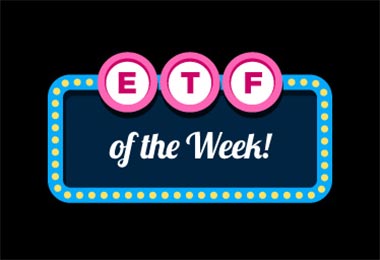It’s not every day you find a bond ETF among the market’s top performers. But that’s the case right now, where not one, but two, fixed income ETFs are seeing outsized returns:

Source: ETF.com; data as of Aug. 22, 2019
The PIMCO 25+ Year Zero Coupon US Treasury Index ETF (ZROZ) and the Vanguard Extended Duration Treasury ETF (EDV) are the top two-performing ETFs of the past 30 days. ZROZ has risen 17% in the past month, while EDV has risen 15%, far outdistancing the bond ETF benchmark, the iShares Core U.S. Aggregate Bond ETF (AGG):

Source: Stockcharts.com. Data as of Aug. 22, 2019.
ZROZ and EDV are fairly similar funds, which is why we’re taking the unusual step of making them both ETF of the Week.
Extended Duration ETFs Rise
Both are extended-duration bond ETFs, which essentially means they hold bonds that are hypersensitive to interest-rate risk.
Indeed, that’s what duration means—it’s a measure of how impacted a bond is by fluctuating interest rates. If a bond ETF has a duration of, say, five years, then its price will tend to rise about 5% as its yield drops 1 percentage point, and it’ll drop by the same amount if its yield goes up 1 percentage point. (That’s not a hard and fast rule, though. Just a good rule of thumb.)
ZROZ has a duration of 26.66 years, while EDV has a duration of 24.30 years—easily making them the two fixed income ETFs with the highest durations. As interest rates have fallen and the yield curve up-ends, that’s been good news for their returns.
Under The Hood
Both ZROZ and EDV achieve their extended duration by holding a market-weighted portfolio of long-term Treasuries that have had their coupon cash flows excised. That removes the income portion of the fixed income instrument, leaving only the principal repayment at maturity.
Known as STRIPs, these instruments are essentially zero coupon bonds, and as such, are extremely sensitive to interest-rate risk.
They also tend to exhibit much more volatility than similar vanilla long-dated Treasuries. ZROZ has a beta of 1.57 and EDV a beta of 1.41 to our segment benchmark, the Bloomberg Barclays Long U.S. Treasury Index; compare that to the iShares 20+ Year Treasury Bond ETF (TLT), which exhibits a beta of 1.02.
Notably, even though the bonds inside ZROZ and EDV don’t make income payments, both ETFs still make quarterly distributions to their shareholders, paid out using proceeds from the bonds sold at each rebalance.
ZROZ vs. EDV
ZROZ is the smaller of the two funds, with a mere $335 million invested compared with EDV’s $1.27 billion. It’s also more than twice as expensive, with an expense ratio of 0.15% compared to EDV’s 0.07%.
ZROZ is also the less liquid of the pair, with an average spread of 0.30% and daily volume around $6 million. In contrast, EDV trades nearly four times that much in daily volume, with an 0.08% spread.
Still, investors who can purchase in large lots will still find plenty of liquidity in the underlying for either fund, because liquidity providers can assemble or disassemble STRIPs as they need to.
Contact Lara Crigger at [email protected]

